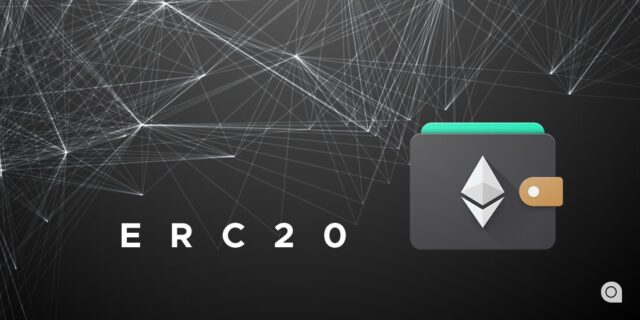
ERC20 is an abbreviation for Ethereum Request for Comments with 20 being the unique proposal identity. ERC20 is not a technology, software, or piece of code. It is a technical specification. If a token implements the spec, it is an ERC20 token.
An ERC20 Wallet is an Ethereum compatible wallet and the only one that can store ERC20 tokens.
Why do you need an ERC20 compatible wallet?
The best investment avenue comes from the Initial Coin Offerings (ICO). A large number of these ICO’s are issued on Ethereum blockchain thus the mandatory requirement to have Ether cryptos and the corresponding wallet that will facilitate the sending and receiving of these coins. This wallet is doubtless an Ethereum wallet. Except for its intangibility, a digital wallet is no different from a real wallet. Just as a wallet can be stolen, so can a digital wallet and especially if operated online or on a device that is frequently internet enabled. Read more here.
It is, however, worth noting that not all Ethereum wallets are compatible with ERC20 tokens. The most popular ones that are compatible include:
- MyEtherWallet (online operated)
- MetaMask (Chrome or Firefox extension)
- Mist (offline desktop)
- Parity (desktop)
- imTokens (Android OS)
A few incompatible Ethereum wallets are:
- Coinbase
- Bittrex
- Exodus
- Bitcoin Exchange
- Ethereum Exchange
These means that any Ether coins held in an incompatible wallet should first be moved to a compatible one to proceed with transactions.
How to create an ERC20 wallet
Having established the wallets that are compatible with ERC20 and those that are not, let’s proceed to create an Ethereum compatible wallet online and another offline. The steps are fairly simple:
MyEtherWallet (online)
- Download the latest version from the website myetherwallet.com
- An option to ‘create a new wallet’ will appear. Create a password by keying in a combination of letters, numbers, and symbols to make the password as indecipherable as possible. It is advisable to back it up by noting it down in a paper and keeping it in a safe place.
- Save your keystore This is so important that it cannot be over-emphasized. Secure it as it will someday hopefully be worth millions of dollars.
- Save your wallet by clicking on ‘download key store file.’ Add to your backup by saving it to USB stick or notebook that is safely guarded.
- Save your private key by clicking on ‘I understand, continue’. This private key is a string of symbols and requires proper security. Once forgotten, it cannot be recovered. It is therefore advisable to print it and tuck it away safely.
- Click on ‘see my wallet address’. Then click on ‘view wallet info’ and ‘select wallet file’. Navigate to the “UTC-2018…” keystore file you saved earlier. Key in your keystore password and click ‘unlock’.
Your wallet is now unlocked and ready to use! You are now able to view your public address which is a string of letters and numbers, your Ether balance, transaction history and your private key if you opt to. You can also now print your paper wallet.
A cautionary word: never give out your private key to undertake a transaction. Always use the account address.
Ethereum Mist wallet (offline desktop)
Mention has been made of the additional security in safeguarding an offline wallet. Let’s now go through a step-by-step guide to opening an offline wallet:
- Get the latest version of Mist on GitHub that your system can accept and download it.
- Unzip the downloaded file and launch the Ethereum wallet App.
- Two options will appear. Click on ‘Use the main ‘
- A pop-up window asking whether you have a wallet file will appear and since the assumption is made that you are opening for the first time, click on ‘Skip’.
- Create a password. Do this by jumbling up symbols, letters, and numbers and ensure to make it as strong as possible. Write it down on a paper and save it where you store your valuable information. It is important to remember that the password, once lost, is irrecoverable.
- Backup password and keystore file then click ‘OK’.
Your wallet is ready for loading.
How to store ERC tokens on your new wallet
It is an easy process to store ERC tokens in your wallet as we shall see shortly. Before choosing an Exchange, it would do well to examine the fees charged by each as some can be quite high. Once identified, follow these simple steps to load your wallet. For purposes of illustration, we will take Bitstamp as our Exchange platform:
Click on bitstamp.net.
Create an account by filling the contact information required and agree to the terms of use and privacy policy by checking the small box provided.
Click on ‘Register’; Using the email address you provided when creating an account, you will receive login ID and password which to use to login to the site
Change the password to make it personal and strengthen it by combing letter and numbers randomly.
‘Enable two-factor authentication’ for enhanced security
Click on ‘buy/sell’ option, and this will lead to the verification of the account. Click on ‘verify’ to proceed.
Between corporate and personal account, click on ‘personal’ as fill in your details as required. Note that to avoid rejection, uploaded documents and pictures should be of superior quality.
Verification should take about 30 minutes, and our wallet is now ready to receive the first deposit.
Choose ‘deposit’ from the main menu. There are many deposit options, and all attract different fees.
Select the amount you wish to deposit and make the transfer. Depending on the deposit option you chose, the transfer can be immediate or can take a whole day.
Once the account is topped up, click on ‘trading option’ and ‘buy ETH’.
Indicate the amount you wish to spend on buying ETH and click ‘buy’. You now have ETH in your account.
Transfer to your ERC20 wallet by going to the withdraw section of your account and select ‘ETH’. A withdrawal window will appear.
Fill in your wallet address and select ‘amount. Withdraw your Ether to your ERC20 wallet. An email will be generated that will require you to confirm that you have made the transfer. On confirmation the transfer is complete, you have your first Ethereum in your ERC20 wallet.
Just like no business can be started and managed efficiently without adequate tools, neither can any serious investor in the crypto niche conduct business without the ERC20 token wallet. It is a must-have and embraces most of the other crypto token easily.













